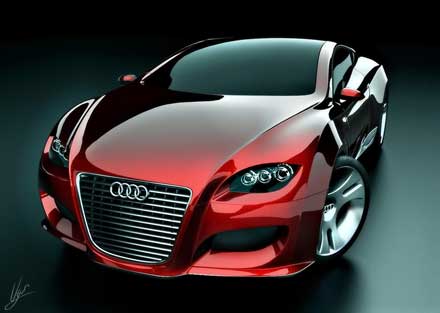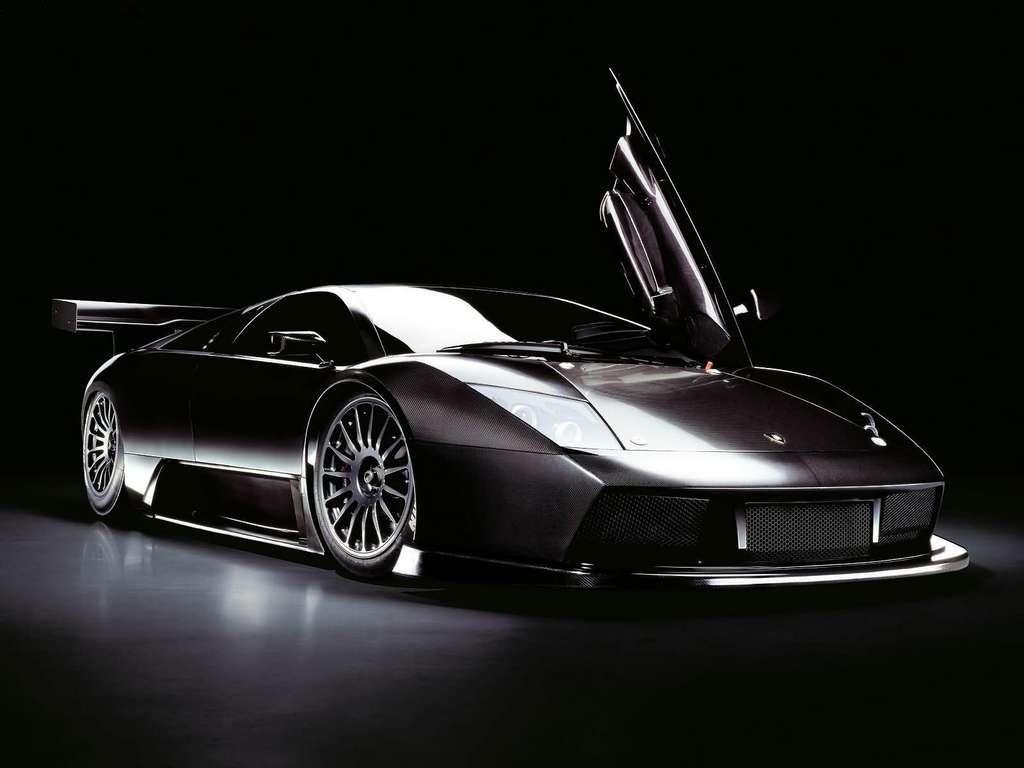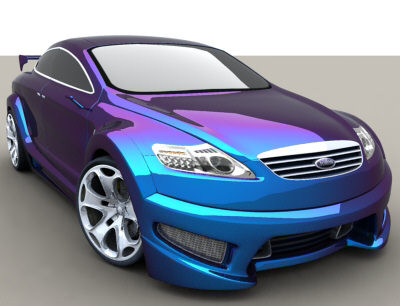 The most accurate description we could think of giving the all-new Passat CC is a “poor-man’s” Mercedes CLS –but don’t expect VW to ever (officially) admit something like that. Instead, the German carmaker talks about a sporty, 4-door version of the Passat with coupe elements in its design. Apart from the styling differences, VW’s four-door coupe is also longer (+30mm or 1.2-inches), wider (+36mm or 1.4-inches) and lower (-52mm or 2.0-inches) than the classic Passat. Inside, the Passat CC gets new sports seats, different instruments and control of the standard climate control system, new steering wheel designs and door trims.
The most accurate description we could think of giving the all-new Passat CC is a “poor-man’s” Mercedes CLS –but don’t expect VW to ever (officially) admit something like that. Instead, the German carmaker talks about a sporty, 4-door version of the Passat with coupe elements in its design. Apart from the styling differences, VW’s four-door coupe is also longer (+30mm or 1.2-inches), wider (+36mm or 1.4-inches) and lower (-52mm or 2.0-inches) than the classic Passat. Inside, the Passat CC gets new sports seats, different instruments and control of the standard climate control system, new steering wheel designs and door trims. The Passat CC will be offered with three gasoline units (160 HP 1.8 TSI, 200 HP 2.0 TSI and 300 HP 3.6 FSI – 280 HP in the
Passat CC - Key Aspects
North American International Auto Show:
World premiere of a new Passat dimension
- Passat CC takes the stage with an unmistakable design
- Lane Assist offers active steering support for greater convenience and safety
- Dynamic Drive Control enables top notch driving characteristics
- Economical, clean and strong direct-injection engines with up to 300 PS
The Passat – a success for more than three decades – is now the technological platform for the first four-door coupé from Volkswagen. This guarantees that the Passat CC will employ a range of technology that reflects the top level in this segment worldwide. Tailored to these technologies is a body that was completely restructured and redesigned.
Passat CC - Design and dimensions
The four-door coupé measures 4,795 millimeters in length, which is 30 millimeters more than the classic Passat. With a width of 1,856 millimeters (an extra 36 millimeters), the Passat CC already ranges in the competitive field of the upper mid-class. Similar to its width, its track width dimensions were also modified. In front it is 1,533 millimeters (an extra 11 millimeters), and in the rear 1,557 millimeters (an extra 16 millimeters). The new Volkswagen measures just 1,790 millimeters in height (lowered by 52 millimeters) – very sports car like.
Side profile
Especially distinctive are the flowing lines of the car’s side profile. The roof sweeps a very flat curve from the A pillars to far beyond the C pillars toward the rear. The lines of the trunk region even extend into the rear window, as if drawn with a single line. The side windows trace a narrow arc bordered in chrome. To further intensify the sporty styling, the side windows are guided into frameless doors. Beneath the window line, a muscular, developed shoulder line is used as a style-defining design element. Designers speak of a so-called tornado line here. In the case of the Passat CC, it forms a visual connection from the front wheel wells to the taillights; its three-dimensional expression delivers a plus in tension – and that may be taken literally with regard to the stability of the external metal skin. No less powerful: the strong modulation of the door above the chrome parking guard strips, the emphasis of the side skirts and the sporty, outboard wheel wells over the standard 17-inch alloy wheels.
Front end
The front end of the Passat CC shows another facet of the Volkswagen brand’s face. Radiator grille, headlamps and engine hood also bring together the worlds of the sedan and coupé here. More dominant than on any other Volkswagen, the radiator grille with its two cross-struts and centrally placed VW logo extends between the trapezoidal headlamps. The grille is framed in by a surface in car color whose V-like shape represents a visual interface to the engine hood with its distinctive power dome. In the lower area, three large air inlets and the daylight running lamps, left and right, dominate the visual image. The lower borders of the air inlets are formed by a sports car spoiler that optimizes the downforce of the Passat CC at higher speeds. An indicator of the Passat CC’s excellent overall aerodynamic qualities is its drag coefficient of cw 0.29.
Rear end
The rear end of the coupé is also marked by an absolutely independent design. Large-surface dual taillights produce an unmistakable visual image, day and night. A rear spoiler – that has been very stylishly worked into the modulation of the trunk lid – tames air turbulence and, like its counterpart at the front end, supplies greater downforce. The large rear window visually extends far into the short but high-opening trunk lid. It is a continuation of the coupé’s roof line. A styling trick makes the window appear even larger and the trunk lid even smaller: the trunk lid section that directly borders the glass has a black painted cross-stripe in glass look. From a purely visual perspective, it extends the glass look and thereby underscores the dynamic character of the Passat CC. In the lower section of the bumper, meanwhile, attention is drawn to the chrome trim strips, the continuation of the lateral sill panel seam, and the visible tail pipes of the exhaust system on the left and right.
Panorama vent sunroof
Newly developed for the Passat CC is an electrically actuated Panorama vent sunroof. The transparent roof is 750 millimeters long and 1,120 millimeters wide. This means that it covers the entire frontal area up to the B pillars. In this case, the front roof rail is also in black. The "Panorama power vent sunroof", that is the proper term for it, can be raised by 30 millimeters.
Passat CC - Interior
Four ergonomically formed sport seats, upon request with climate control; new instruments, new door trim, new radio and navigation systems
The Passat CC is a pure four-seater. The coupé philosophy is reflected in the interior in this seat layout too. Both in front and in the rear, ergonomically designed sport seats of the highest caliber are used.
The cockpit design of the classic Passat is already considered exceptionally sporty, elegant and high-end. The coupé is also characterized by this basic styling. Newly conceptualized were the entire rear seating area, the instruments, control of the standard climate control system, the steering wheels that are offered and door trim including accent strips. Available options here include accents in genuine wood and newly developed applications of brushed aluminum. However, the decor strips in the doors not only look good: upon request their entire contours become part of a newly designed ambiance lighting system that gives the interior an especially pleasant lighting ambiance at night.
Cockpit
A total of three new leather sport steering wheels are available for the Passat CC. They all have three spokes, where the lower spoke was designed as a dual spoke. Depending on the version, the multifunction keys in the steering wheel can be used to control the trip computer, various assistance systems, the audio systems and telephone. On vehicles with automatic transmission, there is also the option of up- and downshifting by paddles in the vicinity of the two lateral spokes on the steering wheel. Also new on board is the button for controlling the "Dynamic Drive Control" system (DDC with a
The Passat CC is being offered with a new generation radio and navigation system. Features of the top version – the RNS 510 – include intuitive touchscreen control and a hard-disk supported navigation system. In conjunction with the "Park Assist" active parking assistance system, when driving in reverse images of the surroundings behind the Passat are transmitted to the screen from a rearview camera (in the VW emblem).
Front seats
Newly developed for the standard 6-way – or optional 12-way – power sport seats in front is a climate control feature. The new climate seat provides active ventilation of the seat and seatback surfaces, improving comfort considerably. 500 to 600 liters of air per square meter are exchanged per minute here using ventilation fan motors that are practically silent. Continuously variable control of the climate seat is offered via a separate switch in the seat base. The climate seat is offered in conjunction with leather and fabric seat covers, and in
Rear seats
Maximum long-distance ride comfort is also offered by the individual seats in the rear. Like the front seats, seat heating is a feature in conjunction with leather and Alcantara seat covers. The sport seats offer – and this differs from a conventional rear bench seat – ergonomically optimized lateral support on the sides of the seatbacks and seat surfaces. Standard features include a center armrest between the two rear seats and an additional storage compartment. As in front, this compartment has two variable beverage holders with a sliding cover to close them. When the center armrest is folded down, a pass-through feature makes it possible to stow longer objects such as skis into the trunk area with its 535 liter volume (with spare wheel well). Protecting the rear passengers from curious onlookers and the sun is an electrically controlled rear window screen. Moreover, tinted privacy glass may be ordered for the rear window and rear side windows (65 percent light absorbing).
Passat CC - Driving dynamic highlights
Lane Assist takes over lane guidance when the driver doesn’t; Dynamic Drive
Lane Assist
The Passat CC is the first car in the world to offer a lane keeping assistant, the new "Lane Assist". The system developed by Volkswagen has the capability of assisting with a corrective steering intervention that helps to keep the car in its lane. Of course, the system does not relieve drivers of their responsibility for diligent control of the vehicle.
The system is activated via the multifunctional display on the Passat CC. The driver selects the system under the menu item "Lane Assist" to activate it. As long as the driver does not deactivate the system, from that point forward "Lane Assist" takes effect starting at a speed of 65 km/h. "Lane Assist" detects lane markings via a camera in the vicinity of the inside mirror or rain sensor. It does not matter whether the lines are continuous or broken as in the case of a center stripe. "Lane Assist" also operates in darkness or fog. However, the system does not work when there are no lane markings.
Once "Lane Assist" has been activated, the driver is informed by a yellow indicator symbol in the shape of a lane in the instrument cluster. As soon as the camera has located the proper lane markings, the symbol lights green. Now the system is fully active. As soon as the system indicates that the car is leaving the ideal line, "Lane Assist" counters by steering in the opposite direction. Decisive here: counter-steering is very continuous and gentle. If drivers take their hands off the steering wheel completely, the system detects this and issues a warning, both acoustic and by vibration, to request that the driver resume control, and then the system switches itself off.
Similarly, the driver can "override" the "Lane Assist" steering with very little force. The lane keeping assistant does not react when the driver activates the turn signal before crossing over a lane marker either. Incidentally, "Lane Assist" functionality is only possible if the car has "controllable" electro-mechanical power steering, which is standard equipment on the Passat CC.
"Lane Assist" was developed as a convenience technology for freeway driving and drives on well-maintained country highways. The system has the potential for avoiding accidents in certain situations as well. The reason: about 14 percent of all single-car accidents with injuries involve leaving a road lane.
Dynamic Drive Control
When it comes to the chassis: a gain in truly perceptible sportiness always comes at the cost of comfort, and the opposite holds true as well. It would therefore be ideal to have a chassis that could continually adapt to roadway conditions and the specific wishes of the driver or car passengers. However, that requires an electrically adjustable suspension. The latter is offered as standard equipment on the Passat CC in certain markets beginning at a power level of 125 kW / 170 PS. Not only is the suspension’s damping characteristic controlled, but the electro-mechanical power steering is tuned as well. The name of the new system: Dynamic Drive Control, or DDC.
DDC offers three programs: "
In the "Sport" program, on the other hand, the Passat CC turns into an agile sports car, since the suspension is stiffened considerably; power steering assist is reduced and simultaneously has a more direct layout. The opposite is the case in "Comfort" mode. Comfort is significantly improved, especially on poor roadways and during slower driving; the suspension characteristic is then similar to that of a luxury sedan in the style of the Phaeton.
Components of the DDC system include four dampers with characteristic map control, a gateway control module that serves as an interface to the CAN data networks in the Passat CC, three sensors for measuring wheel displacements, three sensors for measuring movements of the car body and one control module for suspension control. The "Sport" and "Comfort" modes are also indicated in the instrument cluster.
Passat CC - Engines and transmissions
Two common rail turbodiesels with 140 PS and 170 PS; three direct injection gasoline engines with 160 PS, 200 PS and 300 PS (US-Version: 280 PS)
Volkswagen will be offering the Passat CC exclusively with highly advanced direct injection engines worldwide. The gasoline engines (TSI and FSI) fulfill the EU-4 and the American ULEV2 emissions standards. The EU-5 that becomes law in 2009 will be satisfied by the turbodiesels (TDI) offered in
1.8 TSI with 160 PS
In
2.0 TSI with 200 PS
At the next power level – in this case also in North America – a 147 kW / 200 PS (at 5,100 rpm) strong TSI is used. It too has a turbocharger, and it too shines with very good torque and fuel economy values. Over 100 kilometers this 280 Newton-meter (starting at 1,800 rpm) strong four-cylinder consumes just 7.9 liters of fuel. Despite this, it offers a top speed of 237 km/h. The Passat CC with this engine handles the sprint to 100 km/h in 7.6 seconds. As an alternative to the standard manual six-speed transmission, a six-speed automatic is available here.
3.6 FSI with 280 PS and 300 PS
The strongest gasoline engine used in the Passat CC is a 3.6 liter displacement six cylinder delivering 220 kW / 300 PS (at 6,600 rpm). In
The Passat CC 3.6 V6 FSI is offered with full-time 4MOTION all-wheel drive as standard equipment. The European version is shifted via the automated DSG dual clutch transmission. Meanwhile, a six-speed automatic with Tiptronic handles shifting work on the
2.0 TDI with 140 PS and 170 PS
In the European market, the Passat CC will also be available with TDI engines that are as economical as they are clean and torque-strong. The new common rail diesels output 103 kW / 140 PS and 125 kW / 170 PS. While the "small" TDI already develops its maximum torque of 320 Newton-meter at a low 1,750 rpm, maximum torque on the "large" TDI is even 350 Newton-meter (from 1,750 rpm). In the 140 PS version, the Passat CC accelerates to 100 km/h in 9.8 seconds and reaches a top speed of 213 km/h. This contrasts with average fuel consumption of just 5.8 liters per 100 kilometers. With 170 PS the Passat CC 2.0 TDI is 227 km/h fast. The Volkswagen puts the classic sprint to 100 km/h behind it in 8.6 seconds. Also excellent is its low fuel consumption value of 6.0 liters per 100 kilometers. Either of the TDIs may be ordered with the innovative DSG dual clutch transmission as an option.






















